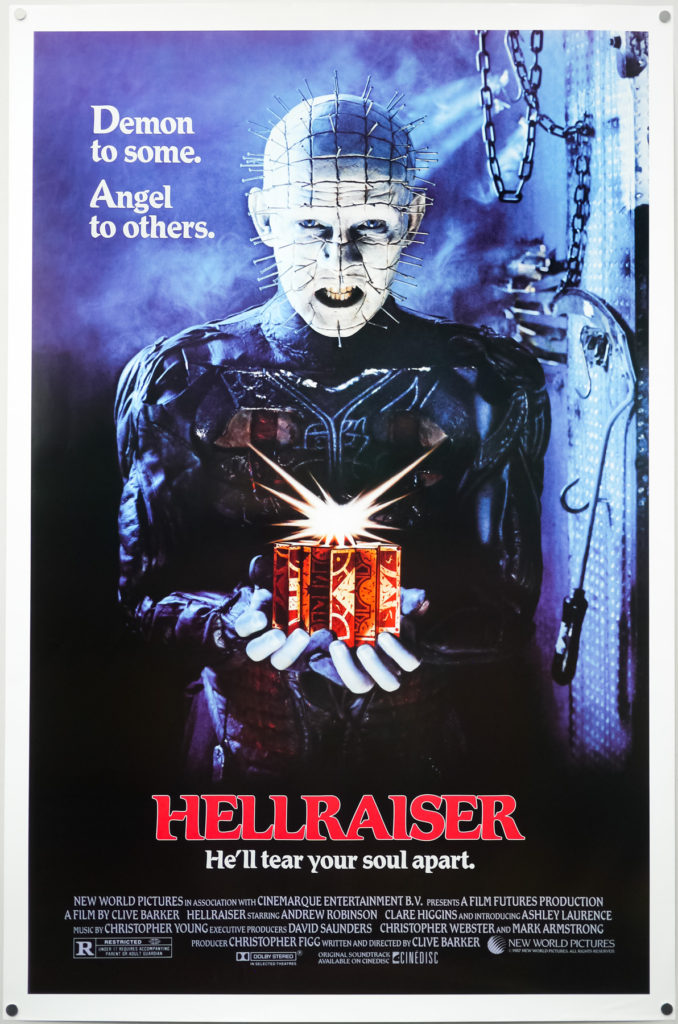*Note. I have kids. They are a huge consumption of time. And energy. And money! I realize it’s February (mid-February at that) and posting these reviews of my Halloween marathon might seem, well, sad. But whatever. Them’s the brakes.
HELLRAISER
Like most of the population, I got fascinated with Pennywise (the Dancing Clown from It). Speaking for myself, I find supernatural monsters fascinating on a “classifiable” level. This pretty much means I want to know what their powers and limitations are, why they do the things they do, what makes them tick. This kind of stems from my roleplaying adventure days, where you could see all the statistics to the creatures you’d encounter on a dungeon crawl.
Pennywise mostly sticks to killing children. The reason stems from him reading your thoughts and knowing what you fear the most — and then he shapeshifts into that thing. Children’s fears are simple: a werewolf, mummy, leper. An adult’s fears are more complex. And that rings true to the worlds of Clive Barker.
I admire the hell out of Barker’s imagination and fiction; his characters are more often than not just fucked-up adults encountering fucked-up horrors. Hellraiser, based on his Hellbound Heart short story, has become synonymous with Pinhead and his Cenobite friends, but the true demons in the narrative are human weaknesses: infidelity, ennui, gullibility.
Like in Candyman, Hellraiser’s main character (Julia) is a woman chasing a bad-boy who doesn’t have her best intentions in mind. When we see her in a flashback (before her wedding day), she’s natural and buoyant. It’s only after she’s seduced by the villainous Frank (her soon to be brother-in-law) she becomes glacial and taciturn — as if his seed infected her with his evil. She becomes a great black-hat in the picture, and I was happy when they turned her villainy up a few notches in the sequel (an actual worthy carry-over from the first film, something that can’t be boasted about with the other follow-up’s).
That was something that I never really liked about the second part of It (in both the TV movie and the new film). Pennywise still attacks the kids with the same theatricality he had when they were kids. But we know adults run on a different engine, fueled by regrets and passions (did we pick the right spouse? when do our proclivities cross a line?) This is the really interesting meat Barker taps into. Like those in the really-real world, Hellraiser’s monsters are systematic, cold and unforgiving — and like most of us who have spent too much time as adults, we get all mixed up on which is the pleasure and which is the pain.

